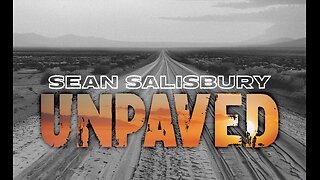Premium Only Content

Learn the constitutionhelp.com Solutions That Will Help Joel Salatin
America's Sixth Default Is Coming What are the details of the first five defaults?
Joel Salatin shares his views on Representative Thomas Massie's PRIME Act (H.R. 2814) and provides the backstory of why this legislation is helpful for small producers. This is an excerpt from "The Lunatic Farmer" on Abundance Plus.
Google AI Overview
The article "America's Sixth Default Is Coming" describes five past "defaults" that were not formal failures to pay debt but rather events in which the government devalued the currency, betraying its promise to creditors. The author argues that the upcoming sixth default will also be a slow debasement of the dollar rather than a one-day catastrophic event.
The five de facto defaults
1. Default of 1862 (suspension of specie payments)
During the Civil War, the government issued "greenbacks," which were fiat paper currency.
This broke the promise that the government would pay its creditors with specie (gold or silver).
Although not a repudiation of debt, creditors who were owed gold were now paid in devalued paper money, which the author characterizes as a "default".
2. Default of 1933 (suspension of the gold standard)
During the Great Depression, President Franklin D. Roosevelt ended the convertibility of the dollar into gold.
He also made it illegal for private citizens to hold gold, and all gold was bought by the government at the old price of $20.67 per ounce.
The government then immediately devalued the dollar by changing the official price of gold to $35 per ounce.
Creditors were thus paid in dollars that were worth 40% less in gold, which the author describes as a "betrayal" of their trust.
3. Default of 1971 (closing the "gold window")
In 1971, President Richard Nixon unilaterally ended the convertibility of the US dollar to gold for foreign central banks, which had been the foundation of the Bretton Woods monetary system.
Foreign creditors who held US dollars were now paid in a currency with no gold backing, again a devaluation that the author calls a "betrayal".
4. Default of 2008 (quantitative easing)
Following the 2008 financial crisis, the Federal Reserve implemented quantitative easing, creating trillions of new dollars to buy assets.
This was a massive expansion of the money supply, which the author argues effectively devalued the currency and was "inflationary".
Like the greenbacks of 1862, this was a form of printing money to solve a debt problem, a betrayal of creditors.
5. Default of 2020 (massive monetary and fiscal stimulus)
In response to the COVID-19 pandemic, the Federal Reserve once again expanded the money supply and partnered with the Treasury to enable massive government spending.
The author characterizes this unprecedented financial stimulus as yet another round of debasing the currency and an abandonment of fiscal discipline.
Join the Weekly Video Call
Learn the constitutionhelp.com Solutions
-
 LIVE
LIVE
VapinGamers
5 hours agoTools of the Trade - EP09 The One About Comedy with Lou Perez - !rumbot !music
48 watching -
 1:10:07
1:10:07
Sean Unpaved
4 hours agoFreddie's Epic Midnight Walk-Off, Saturday's Coaching Carnage, & NFL Weekend 8 Recap
30.1K -
 9:57
9:57
Neil McCoy-Ward
6 hours agoI Walked Into Something I Shouldn’t Have (London)
12.2K15 -
 LIVE
LIVE
SOLTEKGG
6 hours ago🔴LIVE - BATTLEROYALE - BF6 Giveaway
38 watching -
 LIVE
LIVE
Spartan
6 hours agoLies of P and then not sure
12 watching -
 1:41:35
1:41:35
The Quartering
3 hours agoCharlie Kirk Assassin Gets Big Win, Food Riots Coming, ICE Drops Gaming Meme & Breaks Internet
104K40 -
 9:12
9:12
China Uncensored
4 hours agoChina's EV DISASTER
1.4K4 -
 1:07:04
1:07:04
Timcast
5 hours agoFood Stamps ENDING, Riots Feared, National Guard Says DEFY Trump's ORDERS
171K266 -
 2:03:13
2:03:13
Steven Crowder
7 hours agoDave Smith: Discussing Trump, Israel, & America First
479K754 -
 49:56
49:56
The Rubin Report
6 hours agoA Chilling Warning for America & Why Trump’s Tariffs Have Backfired | Yaron Brook
66.3K46